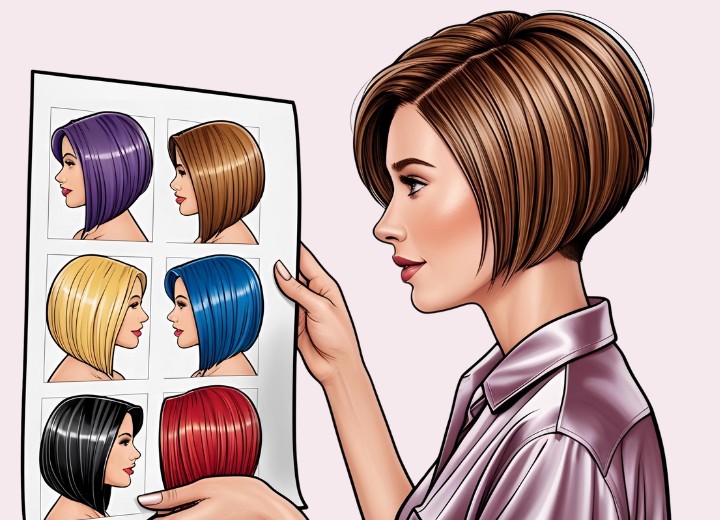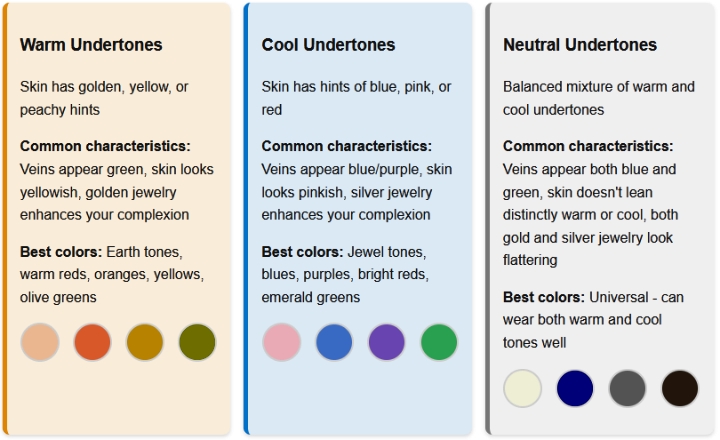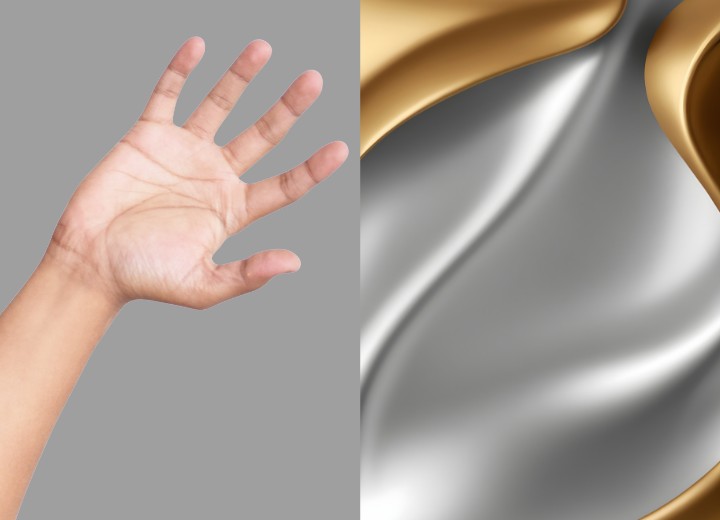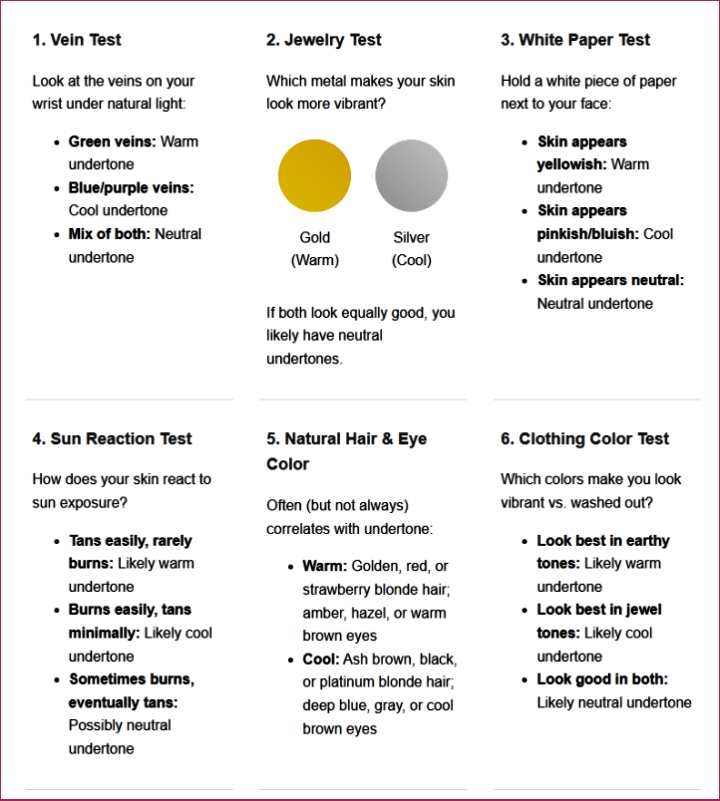Skin Undertones

A: Skin undertones are the subtle hues beneath the surface of your skin that remain constant regardless of your skin's surface color. Unlike your skin tone, which can change with sun exposure or seasonal changes, your undertone stays the same throughout your life. Identifying your undertone is important for choosing the most flattering makeup, clothing, and hair colors.
1. Warm Undertones:
Warm undertones have golden, yellow, or peachy hues beneath the skin. People with warm undertones typically have:
• Veins that appear green on the wrist.
• Skin that looks slightly yellowish.
• A complexion that is enhanced by gold jewelry.
• Natural hair colors with red, orange, or golden tints.
• A tendency to tan easily rather than burn.
2. Cool Undertones:
Cool undertones have hints of blue, pink, or red beneath the skin. People with cool undertones typically have:
• Veins that appear blue or purple on the wrist.
• Skin that looks slightly pinkish or bluish.
• A complexion that is enhanced by silver jewelry.
• Natural hair colors with ashy tones.
• A tendency to burn easily in the sun.
3. Neutral Undertones:
Neutral undertones have a balanced mix of warm and cool hues. People with neutral undertones typically have:
• Veins that appear both green and blue.
• Skin that doesn’t lean distinctly warm or cool.
• A complexion that looks good with both gold and silver jewelry.
• Versatility in wearing a wide range of colors.
• A tendency to sometimes burn but eventually tan.

To find your skin undertone, try these simple tests.
1. The Vein Test: Look at the veins on your inner wrist under natural light.
• Green veins typically indicate warm undertones.
• Blue or purple veins typically indicate cool undertones.
• A mix of both colors may indicate neutral undertones.
2. The Jewelry Test: Notice which metal makes your skin look more vibrant.
• Gold enhances warm undertones.
• Silver enhances cool undertones.
• If both look equally flattering, you likely have neutral undertones.


• If your skin appears yellowish in comparison, you likely have warm undertones.
• If your skin appears pinkish or bluish, you likely have cool undertones.
• If your skin doesn’t appear particularly yellow or pink, you may have neutral undertones.
4. The Sun Reaction Test: Consider how your skin typically reacts to sun exposure.
• Tanning easily with minimal burning suggests warm undertones.
• Burning easily without tanning suggests cool undertones.
• Sometimes burning but eventually tanning suggests neutral undertones.

• Warm undertones are commonly paired with golden, red, or strawberry blonde hair and amber, hazel, or warm brown eyes.
• Cool undertones are often paired with ash brown, black, or platinum blonde hair and deep blue, gray, or cool brown eyes.
6. The Clothing Color Test: Notice which colors make you look vibrant versus washed out.
• Looking best in earthy, warm colors suggests warm undertones.
• Looking best in jewel tones and cool colors suggests cool undertones.
• Looking good in both suggests neutral undertones.

©hairfinder.com
See also: Cool and warm hair colors